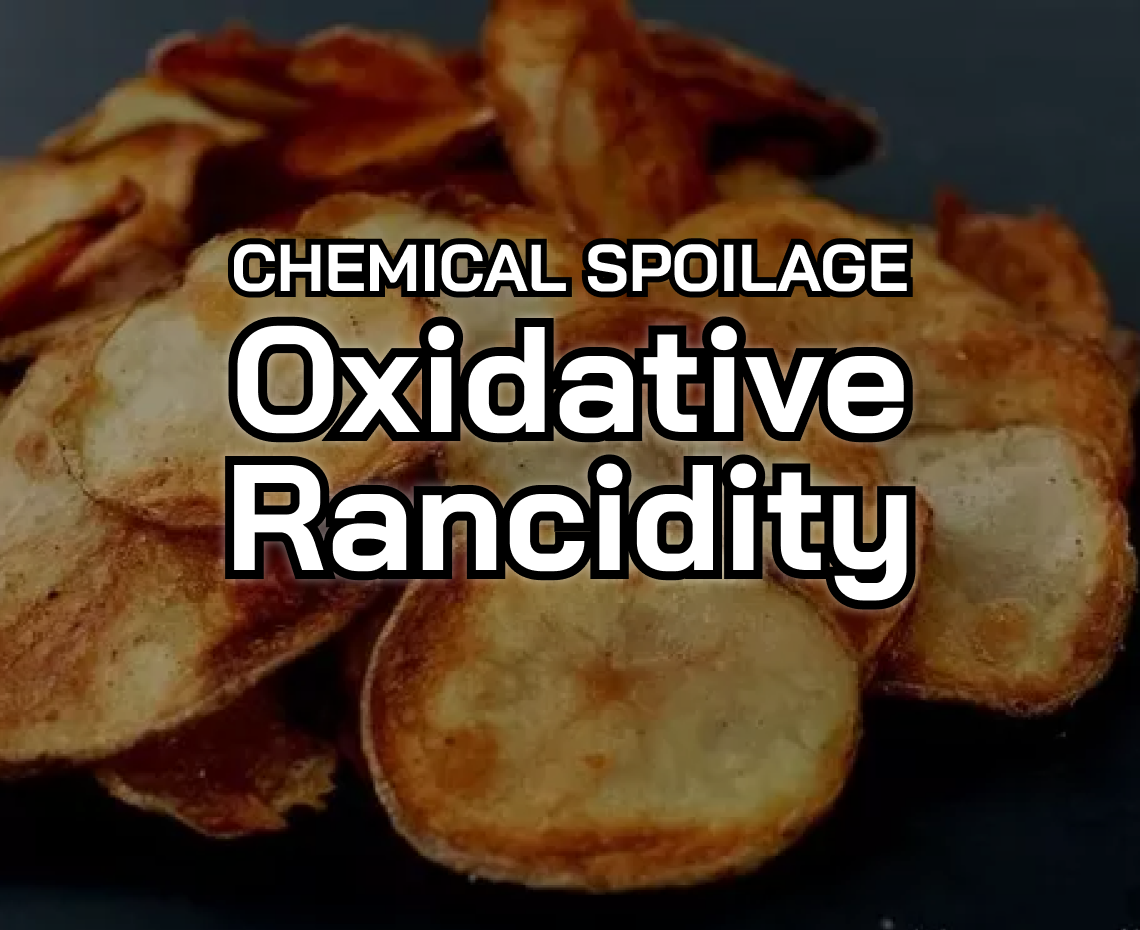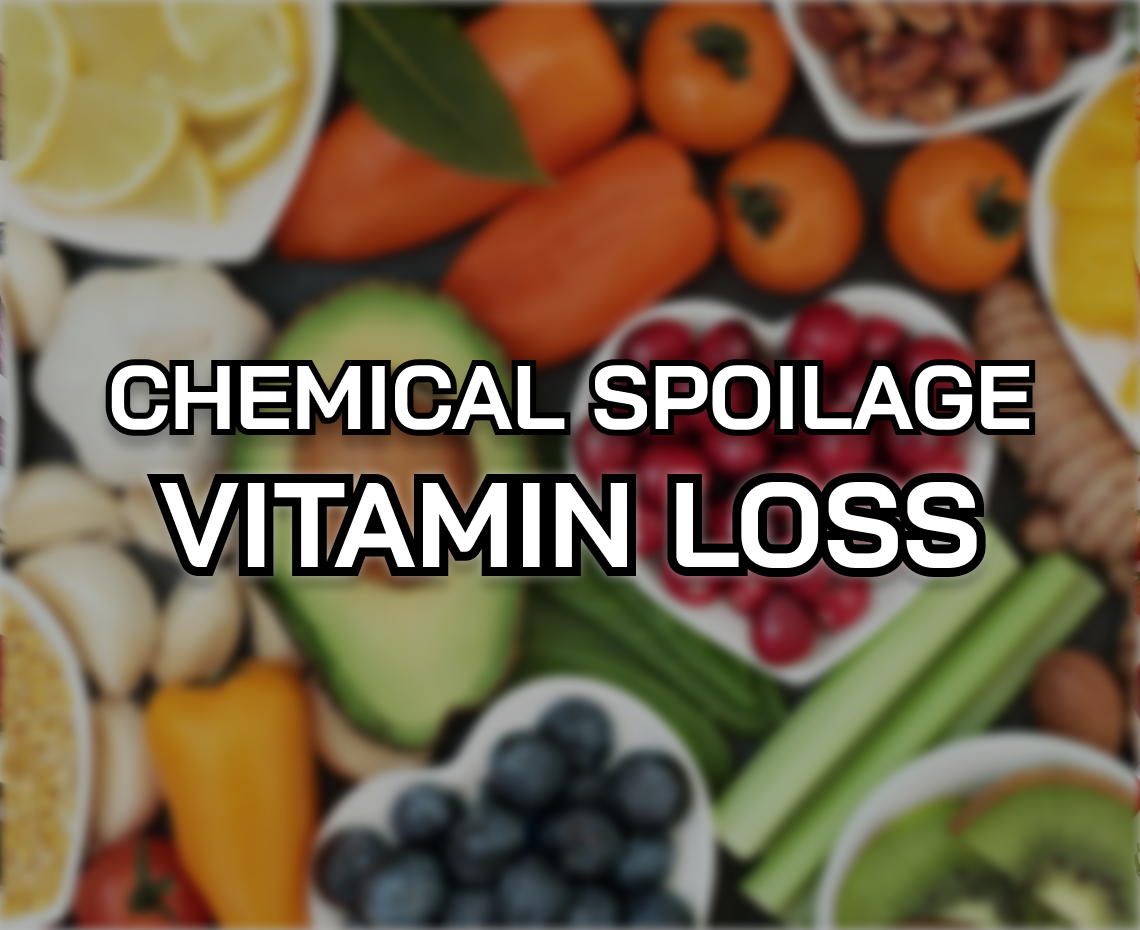Chemical Spoilage: Oxidative Randicity

Oxidative rancidity is the perceived fruity off-flavor or smell caused by the oxidation of fats in food. It can affect any food that contains unsaturated fats, such as meat, fish, and nuts.
What Causes Oxidative Rancidity?
Many of us are familiar with the unpleasant taste of eating stale peanuts or chips, specifically an off smell and taste of rancid butter. Oxidation of the fats and oils in these foods causes this smell and taste.
Oxidation
Oxidation is an autocatalytic reaction that is initiated by oxygen. Autocatalytic refers to a type of chemical reaction that can keep going and increase in volume without needing anything else to help it. In this type of chemical reaction, the products made by the reaction actually speed up the reaction, making more of the same products. Below, we will apply this concept to oxidative rancidity.
Oxidative Rancidity
Oxidative rancidity happens when the fats in food react with oxygen in the air. This reaction creates molecules called free radicals, which are very reactive and cause more reactions. This cycle of reactions is called autoxidation.
When the fats break down as part of this oxidation process, the breakdown creates compounds that cause the bad taste and smell associated with rancidity. The exact compounds produced depend on the type of food.
Antioxidants, like vitamin C or E, can stop the process of autoxidation by preventing the free radicals from causing more reactions.
How to Control Oxidative Rancidity
Completely controlling oxidative rancidity is impossible since eliminating oxygen and preventing free-radical formation are difficult and expensive. However, there are practical ways to manage it.
Control Oxygen Levels
The first step in controlling oxidative rancidity is to control the amount of oxygen. The food industry has developed packaging materials that prevent oxygen from entering food products, and packers include iron-based oxygen absorbers with some products to extend shelf-life. Food scientists and engineers have also developed various techniques to remove oxygen during processing. These techniques include reducing metal ion concentration, chemically saturating fats, and adding antioxidants.
Antioxidants: the Good & Bad
It's worth mentioning that antioxidants can have both positive and negative effects. While they work by creating more stable molecules that can neutralize harmful free radicals, having too many of these stable molecules can actually make the situation worse. This is because they can contribute to a series of chemical reactions called propagation reactions, which can lead to the formation of even more harmful molecules.
An Example of Oxidative Rancidity
The Tuna Cannery
At one point, a tuna cannery had a problem with oxidative rancidity. Large quantities of their product spoiled shortly after canning, while other portions were unaffected. Further investigation revealed that the production from the primary oil tank was fine, but the production from the secondary tank was going rancid.
The Cause of Spoilage
Eventually, they found out that the reason for the spoilage was the way they refilled the oil tanks. When the main oil tank ran out, they ordered more oil to refill it. But instead of just filling up the main tank, they also added some of the new oil to the secondary tank to make sure they had enough for the cannery. However, the old oil in the secondary tank was already starting to spoil through oxidative rancidity. Adding fresh oil gave the oxidation process more fuel, ruining the whole oil batch.
This example highlights the importance of assessing the potential for oxidative rancidity in products that contain unsaturated fats.

.png)
